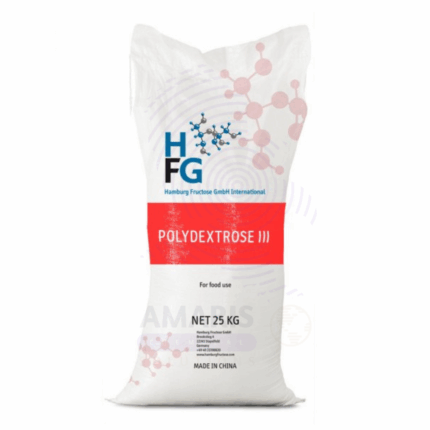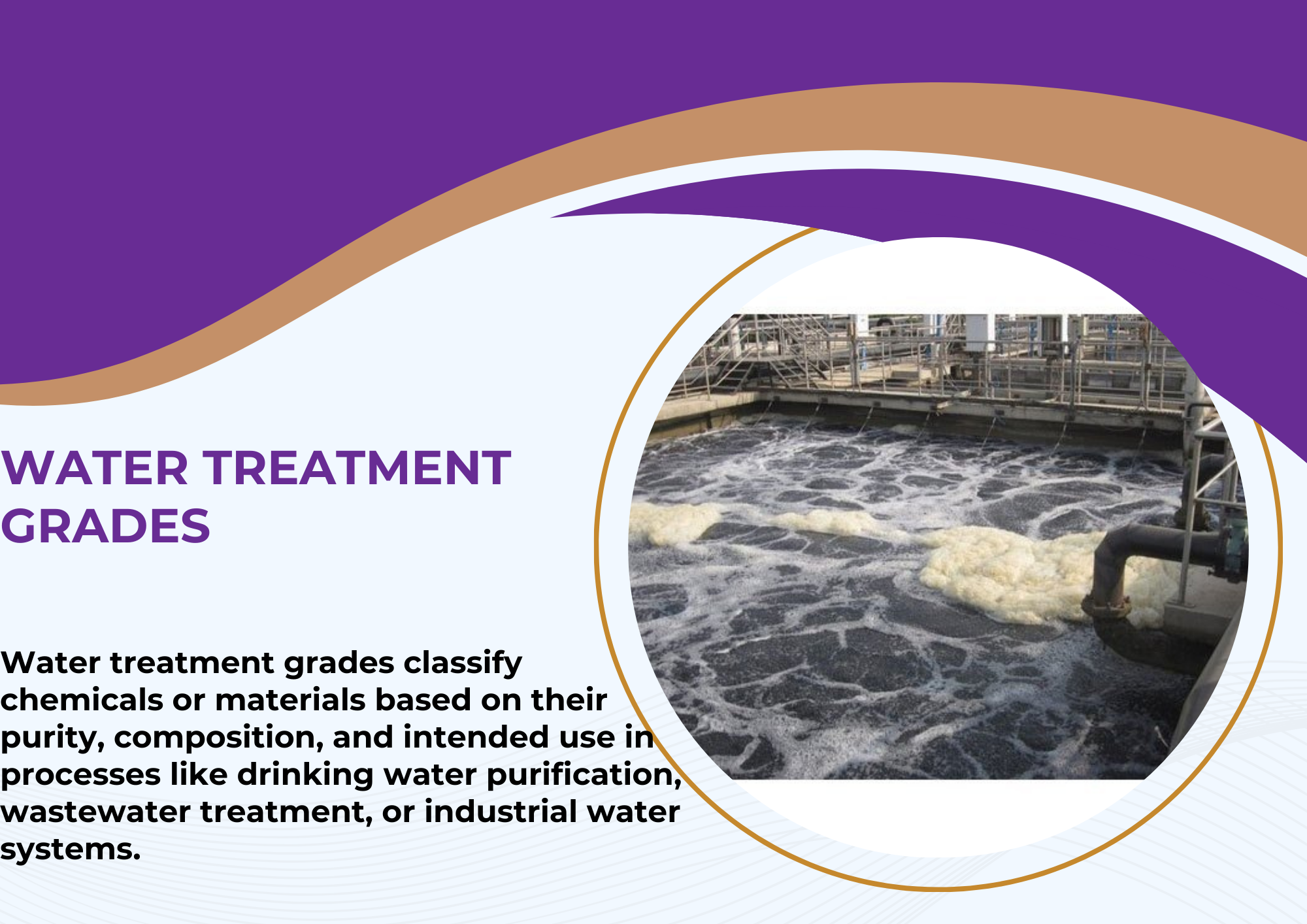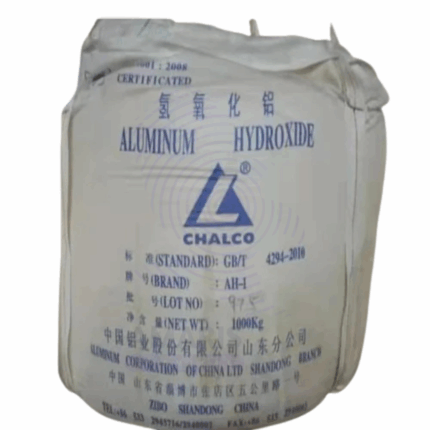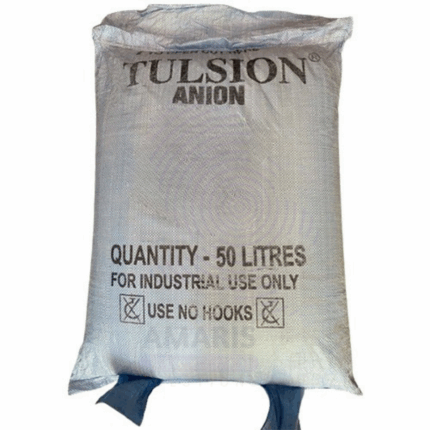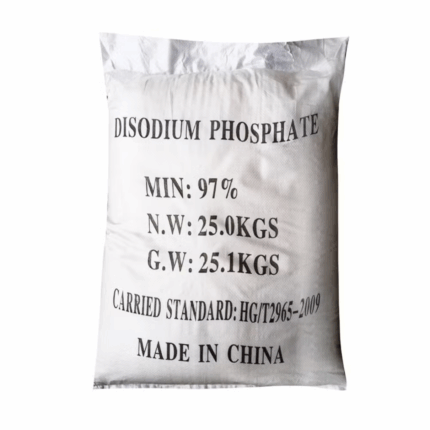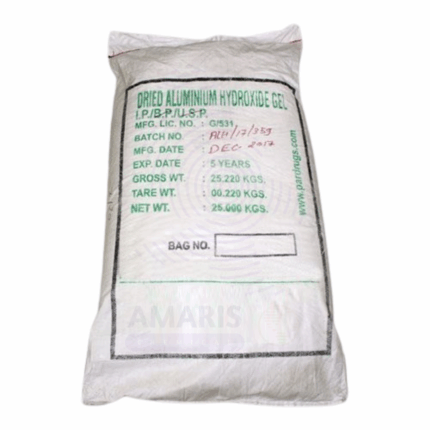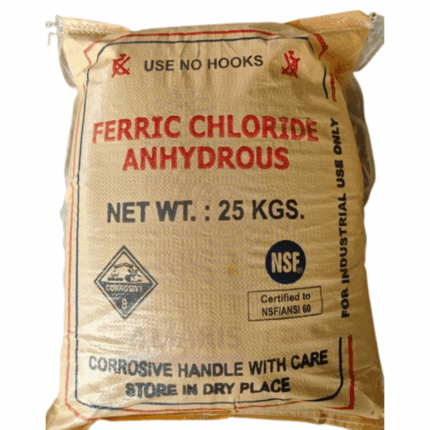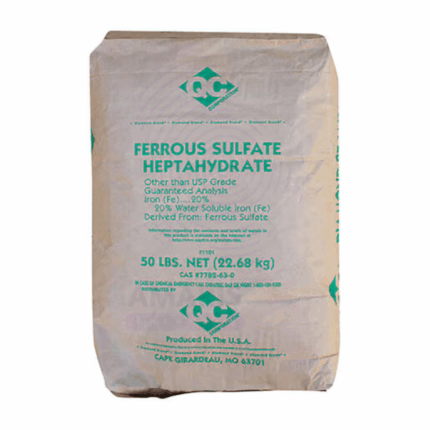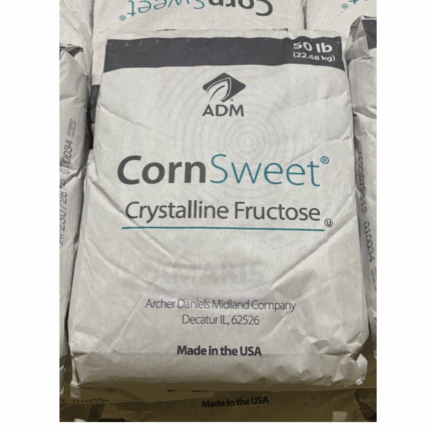Ferric Ammonium Citrate
Ferric Ammonium Citrate is a dark green to black crystalline or granular inorganic compound composed of iron, ammonium ions, and citrate ions. It is a complex salt of citric acid with ferric iron (Fe³⁺) and ammonium. This compound is highly soluble in water, forming a greenish solution, and is widely utilized as a source of iron in various chemical, pharmaceutical, photographic, and food applications. It acts as a mild oxidizing agent and an iron supplement, valued for its bioavailability and ease of incorporation into formulations. Ferric Ammonium Citrate is typically available in different formulations distinguished by their water and ammonium content, such as green and brown types.
Ferric Ammonium Citrate Uses
Primary Uses
- Medical and Pharmaceutical Industry
- Used as an iron supplement to treat iron deficiency anemia due to its bioavailable iron content.
- Incorporated in oral iron preparations and tonics.
- Utilized in wound healing preparations for its antiseptic properties.
- Photography and Imaging
- Employed in photographic processes such as blueprinting (cyanotype) and iron-based photographic emulsions.
- Acts as a light-sensitive agent in various iron-citrate photographic materials.
- Food Industry
- Used as a permitted food additive and colorant (E number E381) to provide iron fortification in foods and beverages.
- Helps prevent iron deficiency in fortified cereals, flours, and dietary supplements.
- Chemical Industry
- Serves as a mild oxidizing agent and catalyst in various chemical syntheses and reactions.
- Used in dyeing and textile printing processes to fix colors.
- Water Treatment
- Functions in water purification systems as a flocculant or coagulant aid.
Secondary Uses
- Biological and Analytical Chemistry
- Utilized in staining procedures and as a reagent in biochemical assays for detecting iron or citrate.
- Cosmetics
- Incorporated in some cosmetic formulations as a colorant and trace nutrient source.
- Agriculture
- Occasionally used in foliar sprays or soil treatments to correct iron deficiency in plants.
- Laboratory Uses
Used as a standard or reagent in research labs studying iron metabolism and oxidation-reduction reactions.
- Basic Identification Attributes
- Chemical Name (IUPAC): Ammonium ferric citrate
- Common/Trade Name: Ferric Ammonium Citrate
- CAS Number: 603-71-0 (variable by hydrate form)
- HS Code: 2833.29.00
- Molecular Formula: Generally variable; common form approx. C6H8O7FeNH4
- Synonyms: Ferric citrate ammonium salt, iron ammonium citrate
- Physical & Chemical Properties
- Physical State: Dark green to black crystalline granules or powder
- Odor: Odorless to slight ammoniacal odor
- Solubility: Highly soluble in water; insoluble in alcohol and organic solvents
- Melting Point: Decomposes before melting, around 150–160°C (hydrated forms)
- pH (aqueous solution): Approximately 3–5 (acidic)
- Stability: Stable under normal conditions; sensitive to strong heat and light exposure which may cause degradation
- Appearance in Solution: Forms clear green solutions
- Safety & Hazard Attributes
- Hazard Class (GHS): Not classified as hazardous but may cause eye and skin irritation
- Toxicity: Low toxicity; ingestion in large quantities may cause gastrointestinal irritation or iron overload
- Exposure Limits: No specific occupational exposure limits established; follow good industrial hygiene practices
- Storage & Handling Attributes
- Storage Conditions: Store in cool, dry, well-ventilated area, protected from light and moisture
- Container Type: Sealed plastic or glass containers, drums or bags depending on quantity
- Shelf Life: 12–24 months when stored properly
- Handling Precautions: Avoid dust formation and inhalation; prevent contact with eyes and skin
- Regulatory & Compliance Attributes
- FDA Status: Approved for use as a food additive and pharmaceutical ingredient
- REACH Registration: Registered under EU chemical regulations
- Food Additive Code: E381 (used as iron fortifier)
- Compliance: Meets applicable standards for food-grade and pharmaceutical-grade materials
- Environmental & Health Impact
- Biodegradability: Readily biodegradable
- Ecotoxicity: Low to moderate aquatic toxicity; avoid large releases to water bodies
- Bioaccumulation: Not expected to bioaccumulate
- Carcinogenicity/Mutagenicity: Not classified as carcinogenic or mutagenic
Safety Handling Precautions
- Personal Protective Equipment (PPE):
- Gloves (nitrile or latex)
- Safety goggles or face shield
- Lab coat or protective clothing
- Dust mask or respirator if powder is handled in dusty conditions
- Handling Guidelines:
- Use in well-ventilated areas
- Avoid inhaling dust or aerosols
- Prevent skin and eye contact
- Minimize dust formation
- Storage Measures:
- Keep containers tightly closed
- Store away from incompatible substances such as strong oxidizers and bases
- Protect from moisture and direct sunlight
- Hygiene Practices:
- Wash hands thoroughly after handling
- Avoid eating, drinking, or smoking in handling areas
- Clean work surfaces and equipment regularly
First Aid Measures
- Inhalation:
- Move to fresh air immediately; seek medical attention if irritation persists
- Skin Contact:
- Wash affected area with soap and water; seek medical advice if irritation develops
- Eye Contact:
- Rinse eyes thoroughly with water for at least 15 minutes; seek medical attention if irritation continues
- Ingestion:
- Rinse mouth with water; do not induce vomiting; seek medical attention if large amounts ingested or symptoms occur
Firefighting Measures
- Fire Hazards:
- Non-flammable but may decompose and release toxic fumes at high temperatures
- Extinguishing Media:
- Use water spray, foam, dry chemical, or carbon dioxide (CO₂)
- Special Precautions:
- Firefighters should wear self-contained breathing apparatus and protective clothing
- Decomposition Products:
May release ammonia, nitrogen oxides, carbon oxides, and iron oxides when heated or burning


 Preservatives(food)
Preservatives(food) Flavor Enhancers
Flavor Enhancers Acidulants
Acidulants Sweeteners
Sweeteners Antioxidants
Antioxidants Colorants(food)
Colorants(food) Nutraceutical Ingredients (food)
Nutraceutical Ingredients (food) Nutrient Supplements
Nutrient Supplements Emulsifiers
Emulsifiers
 Collectors
Collectors Dust Suppressants
Dust Suppressants Explosives and Blasting Agents
Explosives and Blasting Agents Flocculants and Coagulants
Flocculants and Coagulants Frothers
Frothers Leaching Agents
Leaching Agents pH Modifiers
pH Modifiers Precious Metal Extraction Agents
Precious Metal Extraction Agents
 Antioxidants(plastic)
Antioxidants(plastic) Colorants (Pigments, Dyes)
Colorants (Pigments, Dyes) Fillers and Reinforcements
Fillers and Reinforcements Flame Retardants
Flame Retardants Monomers
Monomers Plasticizers
Plasticizers Polymerization Initiators
Polymerization Initiators Stabilizers (UV, Heat)
Stabilizers (UV, Heat)
 Antifoaming Agents
Antifoaming Agents Chelating Agents
Chelating Agents Coagulants and Flocculants
Coagulants and Flocculants Corrosion Inhibitors
Corrosion Inhibitors Disinfectants and Biocides
Disinfectants and Biocides Oxidizing Agents
Oxidizing Agents pH Adjusters
pH Adjusters Scale Inhibitors( water)
Scale Inhibitors( water)
 Antioxidants(cosmetic)
Antioxidants(cosmetic) Emollients
Emollients Fragrances and Essential Oils
Fragrances and Essential Oils Humectants
Humectants Preservatives
Preservatives Surfactants(cosmetic)
Surfactants(cosmetic) Thickeners
Thickeners UV Filters
UV Filters
 Fertilizers
Fertilizers Soil Conditioners
Soil Conditioners Plant Growth Regulators
Plant Growth Regulators Animal Feed Additives
Animal Feed Additives Biostimulants
Biostimulants Pesticides (Herbicides, Insecticides, Fungicides)
Pesticides (Herbicides, Insecticides, Fungicides)
 Active Pharmaceutical Ingredients (APIs)
Active Pharmaceutical Ingredients (APIs) Excipients
Excipients Solvents(pharmaceutical)
Solvents(pharmaceutical) Antibiotics
Antibiotics Antiseptics and Disinfectants
Antiseptics and Disinfectants Vaccine Adjuvants
Vaccine Adjuvants Nutraceutical Ingredients (pharmaceutical)
Nutraceutical Ingredients (pharmaceutical) Analgesics & Antipyretics
Analgesics & Antipyretics
 Analytical Reagents
Analytical Reagents Solvents(lab)
Solvents(lab) Chromatography Chemicals
Chromatography Chemicals Spectroscopy Reagents
Spectroscopy Reagents microbiology-and-cell-culture-reagents
microbiology-and-cell-culture-reagents Molecular Biology Reagents
Molecular Biology Reagents Biochemical Reagents
Biochemical Reagents Inorganic and Organic Standards
Inorganic and Organic Standards Laboratory Safety Chemicals
Laboratory Safety Chemicals Specialty Laboratory Chemicals(Special Laboratory Equipment)
Specialty Laboratory Chemicals(Special Laboratory Equipment)
 Demulsifiers
Demulsifiers Hydraulic Fracturing Fluids
Hydraulic Fracturing Fluids Scale Inhibitors(oil)
Scale Inhibitors(oil) Surfactants(oil)
Surfactants(oil) Drilling Fluids
Drilling Fluids
 Dyes and Pigments
Dyes and Pigments Bleaching Agents
Bleaching Agents Softening Agents
Softening Agents Finishing Agents
Finishing Agents Antistatic Agents
Antistatic Agents
 Admixtures
Admixtures Waterproofing Agents
Waterproofing Agents Sealants and Adhesives
Sealants and Adhesives Curing Compounds
Curing Compounds Concrete Repair Chemicals
Concrete Repair Chemicals Anti-Corrosion Coatings
Anti-Corrosion Coatings
 Surfactants(cleaning)
Surfactants(cleaning) Builders
Builders Enzymes
Enzymes Solvents (Cleaning)
Solvents (Cleaning) Fragrances
Fragrances
 Electronic Chemicals
Electronic Chemicals Catalysts
Catalysts Lubricants
Lubricants Photographic Chemicals
Photographic Chemicals Refrigerants
Refrigerants Automotive chemicals
Automotive chemicals Pyrotechnic Chemicals
Pyrotechnic Chemicals
 Biodegradable Surfactants
Biodegradable Surfactants Bio-based Solvents
Bio-based Solvents Renewable Polymers
Renewable Polymers Carbon Capture Chemicals
Carbon Capture Chemicals Wastewater Treatment Chemicals
Wastewater Treatment Chemicals
 Pigments
Pigments Solvents(paint)
Solvents(paint) Specialty Coatings
Specialty Coatings Binders/Resins
Binders/Resins Additives
Additives Driers
Driers Anti-Corrosion Agents
Anti-Corrosion Agents Functional Coatings
Functional Coatings Application-Specific Coatings
Application-Specific Coatings
 Fresh Herbs
Fresh Herbs Ground Spices
Ground Spices Whole Spices
Whole Spices Spice Blends
Spice Blends Dried Herbs
Dried Herbs
 Leavening Agents
Leavening Agents Dough Conditioners
Dough Conditioners Flour Treatments
Flour Treatments Fat Replacers
Fat Replacers Decoratives
Decoratives Preservatives(baking)
Preservatives(baking)
 Plasticizers & Softeners
Plasticizers & Softeners Reinforcing Agents
Reinforcing Agents Adhesion Promoters
Adhesion Promoters Vulcanizing Agents
Vulcanizing Agents Antidegradants
Antidegradants Blowing Agents
Blowing Agents Fillers & Extenders
Fillers & Extenders Accelerators & Retarders
Accelerators & Retarders
